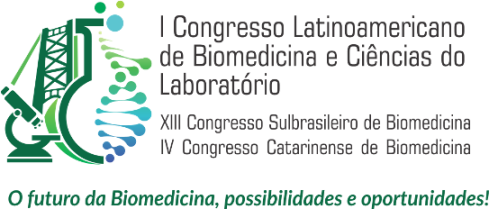Dados do Trabalho
Título
PHOTODYNAMIC INACTIVATION USING HYPERICIN AS THE PHOTOSENSITIZER IS A NEW ALTERNATIVE AGAINST MICROSPORUM CANIS
Fundamentação/Introdução
Microsporum canis is a cosmopolitan zoophilic dermatophyte, whose natural reservoirs are cats and dogs, however, it also causes human infections and is a major agent of Tinea capitis, as well as being frequently involved in Tinea corporis. Ordinarily, the treatment for these infection is expensive and long duration, raising the need for news antifungal. In this way, the superficial nature of these infections and the ease of application of a light source, encourage the study of Photodynamic Inactivation (PDI) as an alternative treatment for these infections.
Objetivos
To evaluate in vitro the antifungal effect of PDI with the use of hypericin (Hy) against M. canis.
Delineamento e Métodos
The antifungal susceptibility assay of planktonic cells was performed by the broth dilution method, according to the Clinical and Laboratory Standards Institute (M38-A2), with modifications. The strain of M. canis from the culture collections of the Laboratory of Medical Mycology of the State University of Maringá was used, and the inoculum was adjusted to final concentration of 1x10⁵ microconidia ml-¹ and incubated in the dark for 120 min with 10 different concentrations of Hy. The resulting fluence was of 16.2 J/cm2. Hy-PDI was determined by the qualitative (Minimum Inhibitory Concentration (MIC)) and quantitative (Colony Forming Units (CFUs)) reduction of the cell viability. Aliquots of each concentration were plated on potato-dextrose agar soon after and 24h after irradiation, and the plates were incubated for 4 days at 25ºC.
Resultados
The results demonstrated that M. canis was susceptible to Hy-PDI. MIC was observed at concentration 6.25 μM in both times, presenting decrease approximately 2 logarithmic CFU/mL soon after irradiation and 2.3 logarithmic CFU/mL 24h after irradiation, knowing that the 2 log decrease represents 99% cell inhibition.
Conclusões/Considerações Finais
Our study evidence promising effect in vitro of Hy-PDI against M. canis. Future studies are necessary to prove its efficacy in the treatment of Tinea capitis and other superficial pathologies caused by dermatophytes.
Palavras-chave
Photodynamic inactivation; hypericin; Microsporum canis
Área
Tema livre
Instituições
Universidade Estadual de Maringá - Paraná - Brasil
Autores
Camila Barros Galinari, Raquel Cabral Melo, Bruna Lauton Simões, Erika Seki Kioshima Kioshima-Cotica, Patrícia de Souza Bonfim-Mendonça
